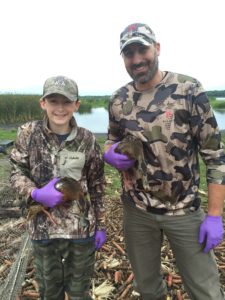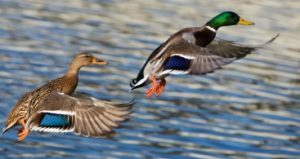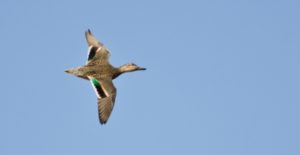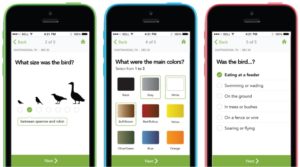Here are tips and resources to help
An article from WWA’s Words From The Wardens.
This article originally appeared in Wisconsin Waterfowl Association’s October 2019 eNewsletter.
By WDNR Conservation Warden Nate Ackerman
It’s that great time of year again, when the cooling temperatures cause the leaves to change and waterfowl to migrate.
For duck hunters, we live for those perfect days when new birds push into an area. The next step is to identify those new birds that have arrived. For new waterfowl hunters, bird identification can be a bit of a challenge. In this column, my goal is to give you some resources and ideas on how to improve your identification skills.
First, a little bit of background about me. I have been a conservation warden since 2006. I originally was in Green Lake County and now I serve Pepin County and part of Buffalo County. I also am one of the lead instructors for our Conservation Warden Duck School.
I teach multiple days of wing identification and on-the-wing identification to new conservation wardens. As wardens, we need to be able to identify birds by fully feathered wings or heads, as well as birds on the wing. The training methods we use to teach these skills to our new wardens includes placing ducks in a muddy bucket where they reach in and pull out a duck to identify.
Practice, practice, practice your duck ID skills
Everyone has to start somewhere. For me, I was lucky to have been raised in a family of waterfowl hunters. I was on the Mississippi River with my dad and grandfather in the mid-80’s as a boy, watching and learning. I remember wishing I was older so I could hunt with them. I was taught to look at ducks on the wing from the bill back. Even early in the year when mallard drakes don’t have much color, the yellowish drab bill stands out, and likewise in the orange of the hen.
Just like anything else, getting good at waterfowl identification takes practice. I always tell people to find an experienced hunter and ask what they look at. The shape of the flock, the size of the bird, the color seen on the wing and location all can be used to correctly identify birds.
If you are hunting a small pothole, you can usually eliminate diver ducks just based on your hunting location. During the spring time when birds migrate back can be an excellent time to observe birds and work on your identification skills.
Look at the flock in the distance, then at individual birds in the flock. Some flocks mix species so never identify one and assume that all the rest are the same. All of this takes time and practice. For teal vs. wood duck identification, the DNR has a teal identification quiz (https://dnr.wi.gov/topic/hunt/waterfowl.html)
This is a start, but actual in the field observation is the best way to learn. If you don’t know what it is – don’t shoot. This leads me to waterfowl online groups.
Know your target: Don’t know? Don’t shoot
Every year there are the “what is it?” posts. These pleads for help are from hunters who post a picture of a bird they shot and do not know what it is. Again, everyone needs to start somewhere; however, I would recommend starting before actually hunting.
Often these posts can be from a new hunter. If that was the first duck the messenger-sender shot, it would be legal regardless of being able to identify it. Instead of making fun of these new hunters, or putting other hunters down, I respectively would challenge you to share with them what you use for identification purposes and how you became better at it.
While working teal season, I was watching a group of duck hunters and one of the hunters was calling out wood ducks so others in the group could hear. The boxy body and erratic flight pattern gives the wood duck away. I thought there was nothing to worry about with this group. A short time later, a lone wood duck flew toward the group, this time from directly behind the hunters and not offering a good side view. To my surprise, the hunter took one shot at the duck before realizing what it was. This example goes to show you that it takes practice, and if you’re not completely sure, don’t shoot.
Resources to help
Finally, I will leave you with some great resources that I have used and recommend others to use to help with identification. The first is U.S. Fish and Wildlife’s helpful document called, Ducks At a Distance (https://www.fws.gov/uploadedfiles/ducks%20at%20a%20distance-ocr.pdf). The PDF can be viewed online or stored to your smart phone. This is an excellent resource for duck identification. You also can purchase hard copies.
My other go-to identification source for all birds is Cornell Lab of Ornithology. They have a free bird identification app for smartphones as well as a helpful website. This is a good place to find all birds, including shore birds and other protected birds you may find in the marsh. (https://www.birds.cornell.edu/home/).
I hope you all have a safe season. And, when you can, please consider taking a kid or new person out in the marsh with you. Help others see what we are so passionate about!
If you have information regarding natural resource violations, you may confidentially report by calling or texting: VIOLATION HOTLINE: 1-800-TIP-WDNR or 1-800-847-9367. The hotline is in operation 24 hours a day, 7 days a week. Trained staff relay report information to conservation wardens.




